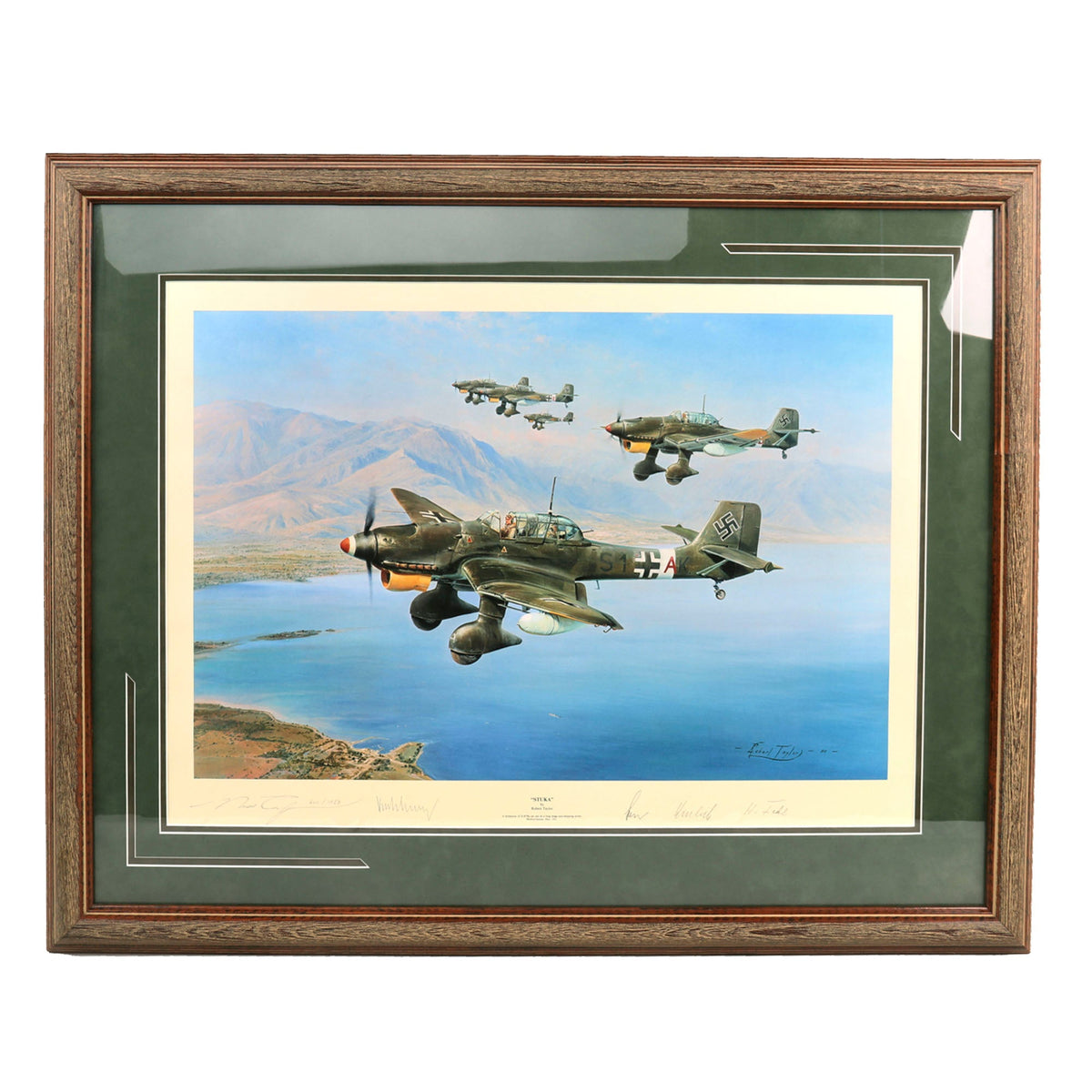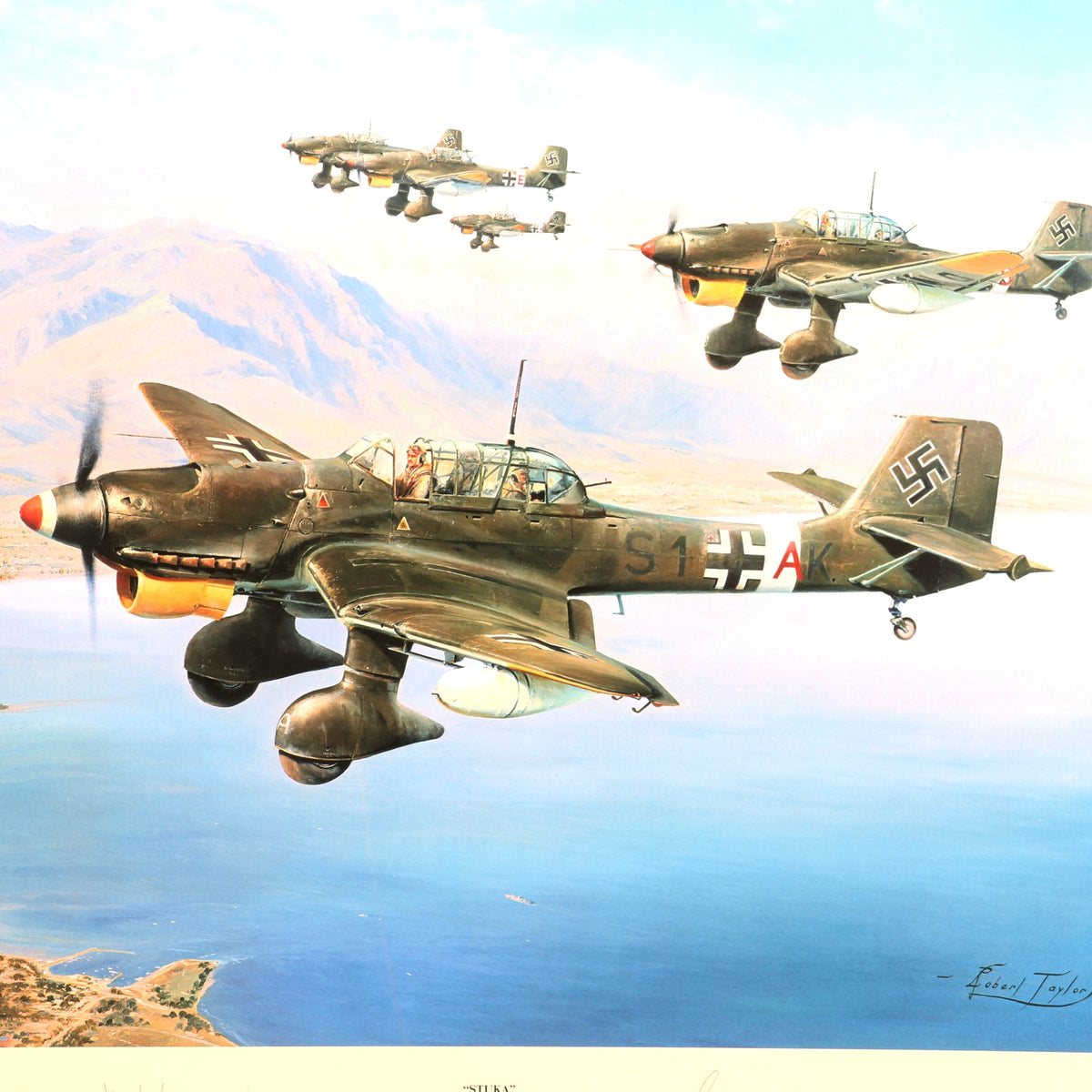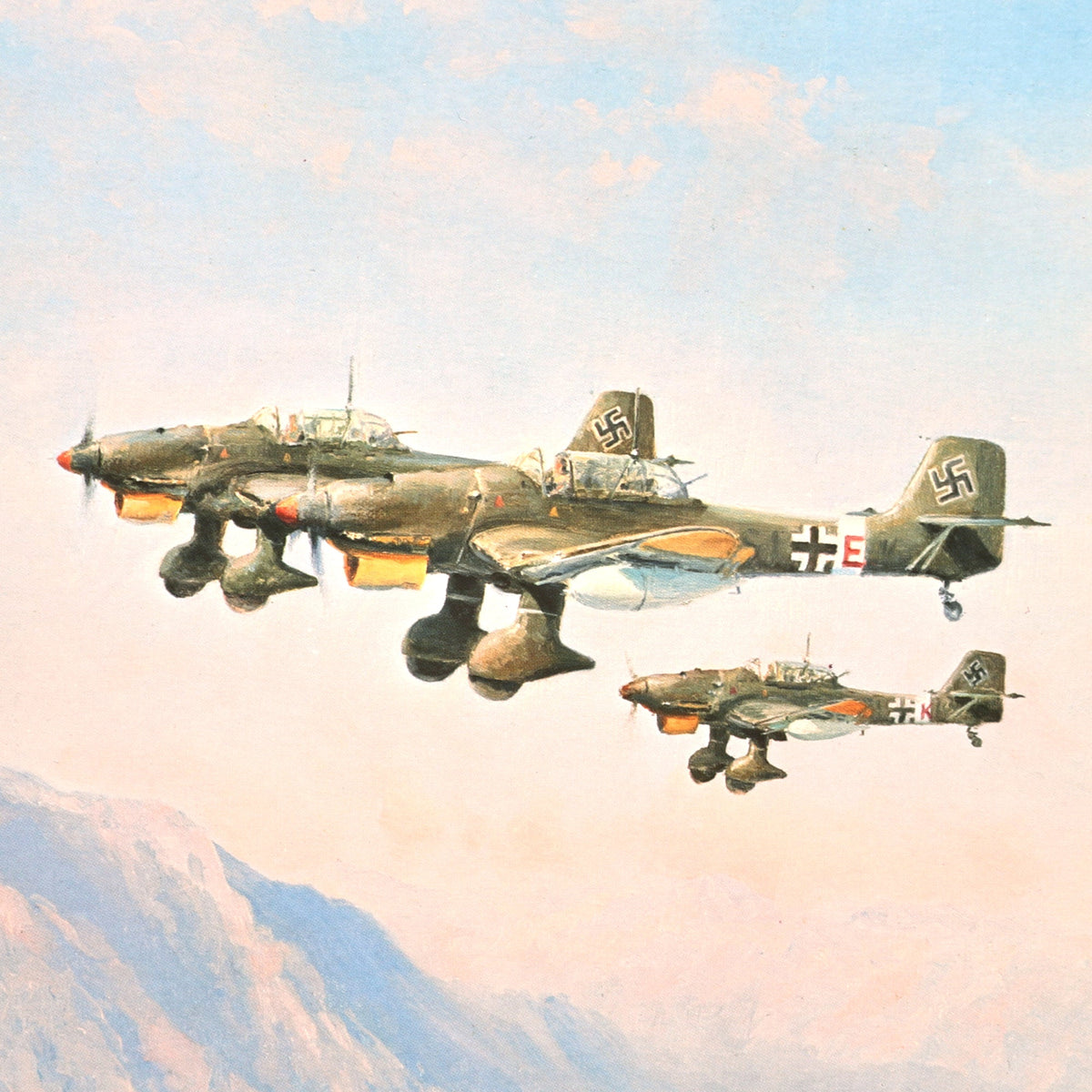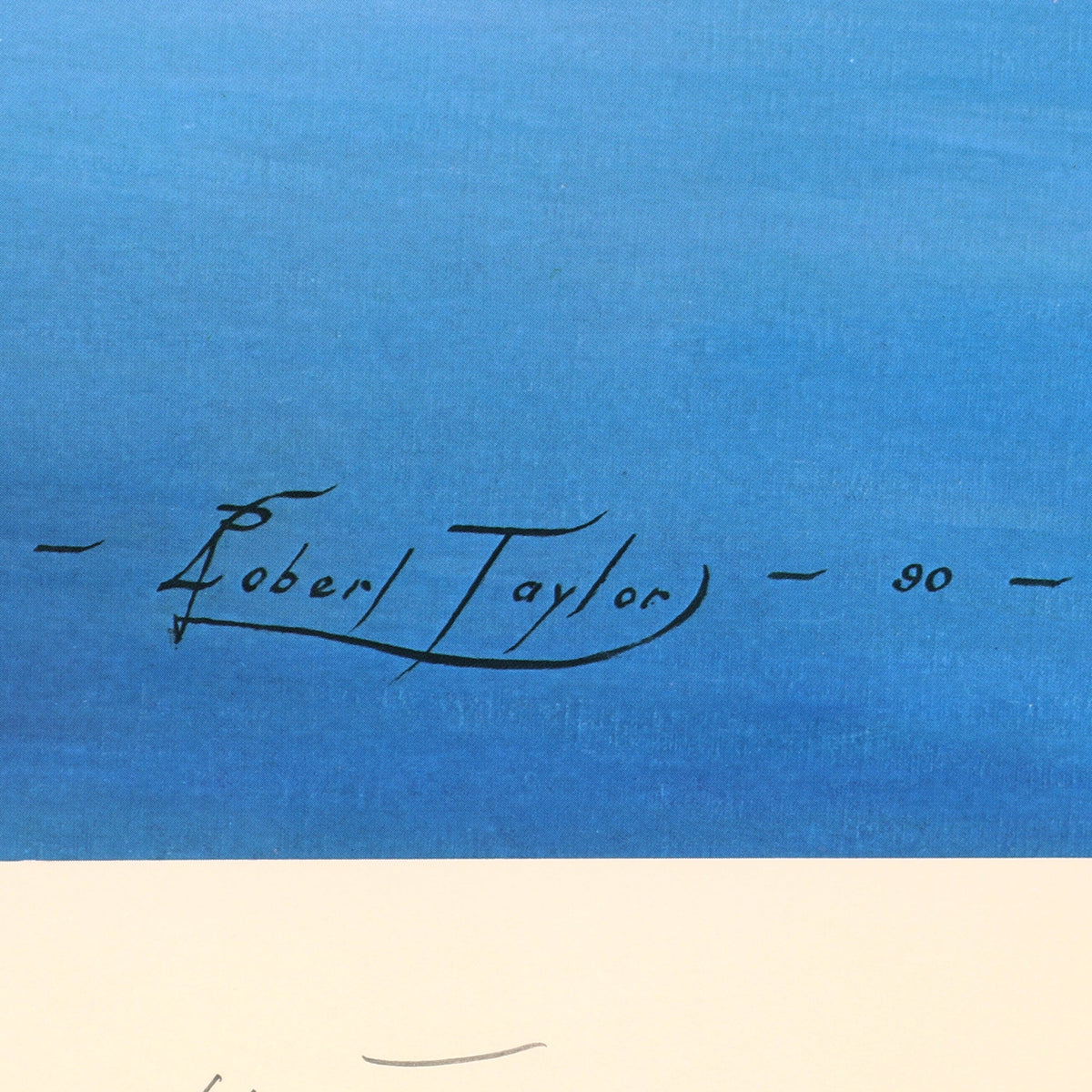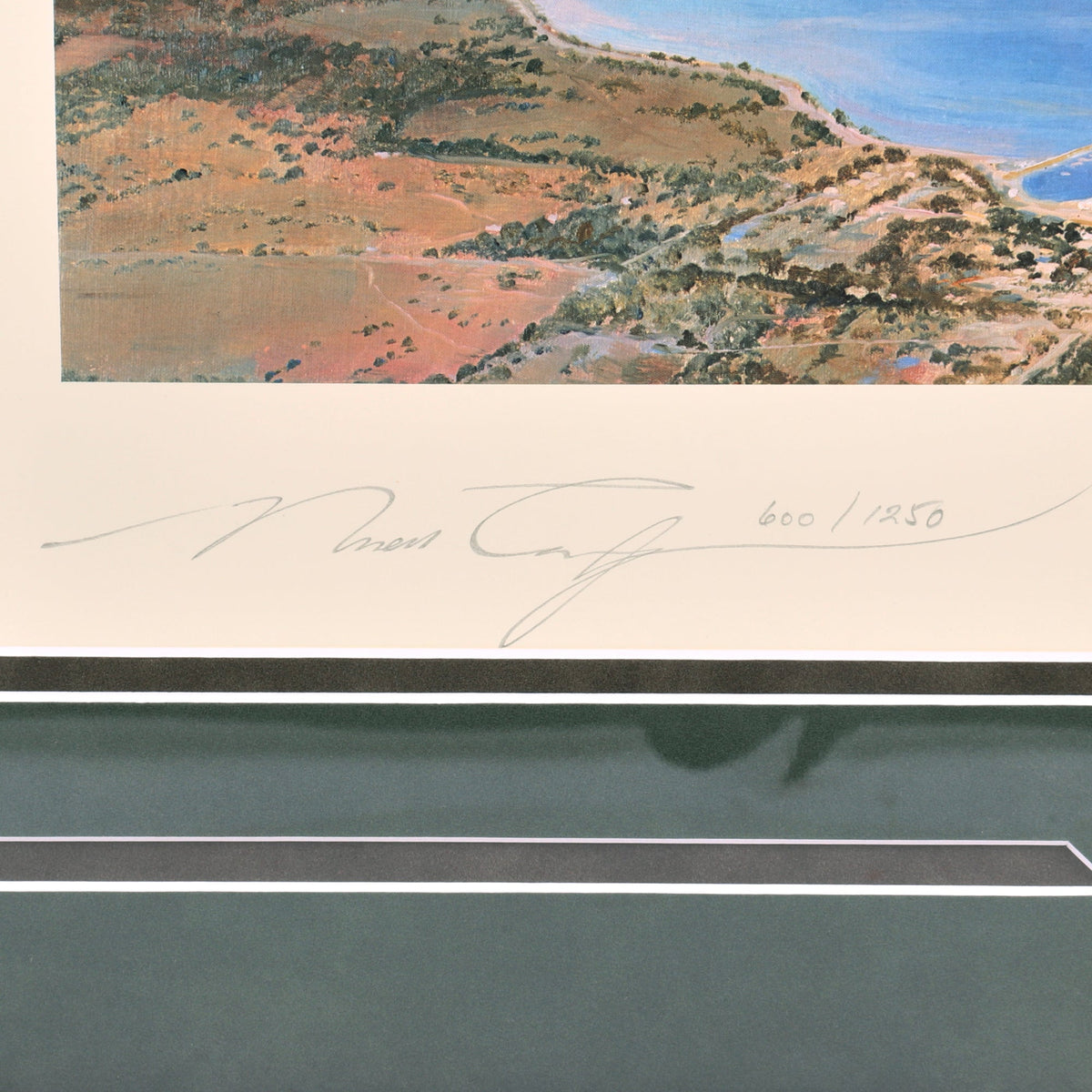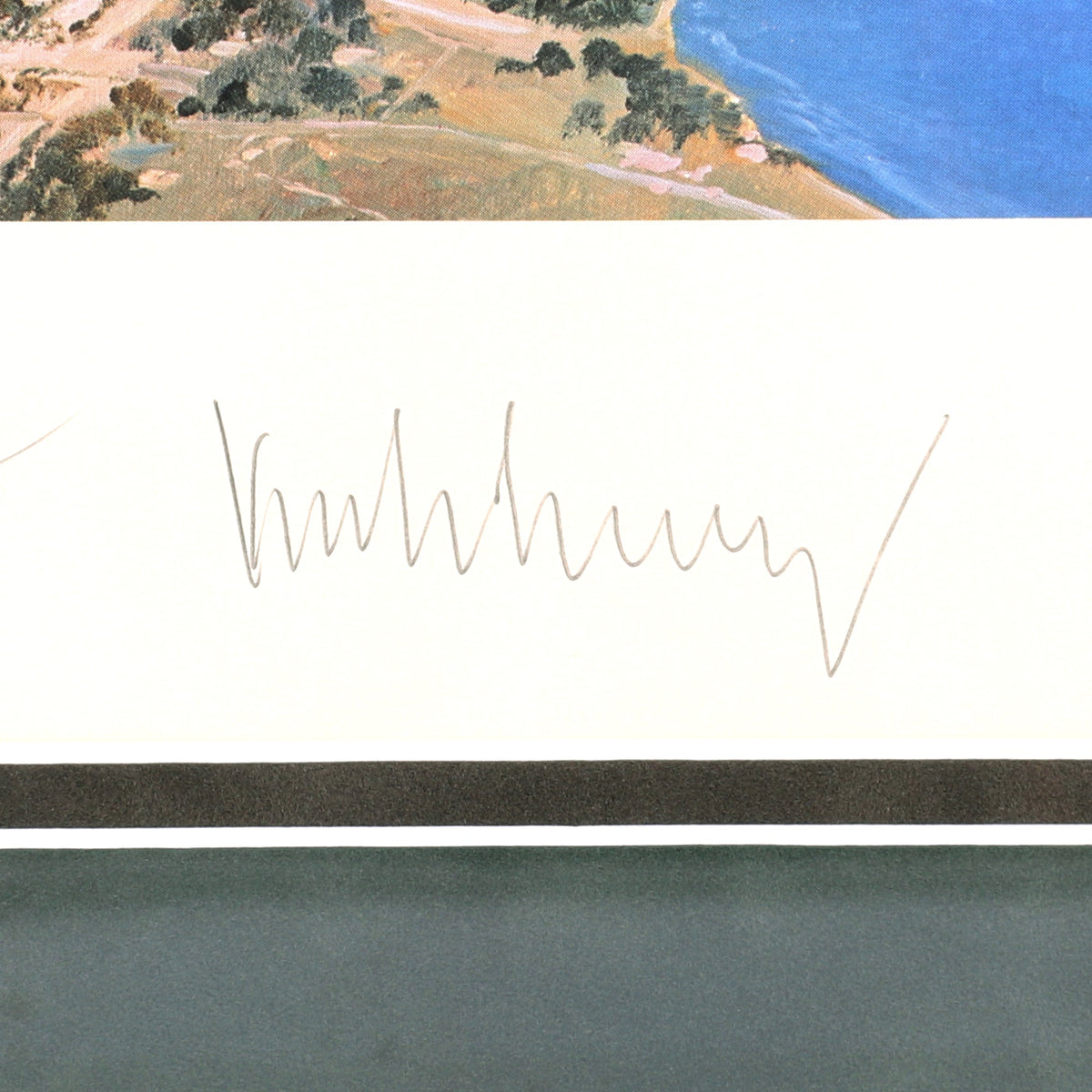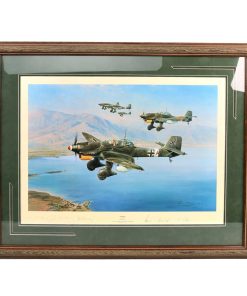Original Artwork Print: “Stuka” Painting of German Luftwaffe Junkers Ju 87R Dive Bombers; Signed by Artist and 4 German Stuka Pilots – 37 ½” x 29 ½”, in Museum Grade Frame Original Items
$ 695,00 $ 208,50
Original Item: Only One Available. This is a lovely framed print of Robert Taylor’s painting “STUKA”, matted and put into a museum grade frame measuring 37 ½” x 29 ½”. This is number 600/1250 of a run of these prints made for collectors, and will make a fantastic display piece on any wall. The painting is set in May 1941 along the Mediterranean coast, showing a formation of five Junkers Ju 87R “Stuka” dive bombers fitted with extra fuel tanks on a long range bombing run against ship traffic.
The “R” designation stands for Reichweite, or “Range”. indicating that they were set up for long range missions. This version had a B-series airframe with an additional oil tank and fuel lines to the outer wing stations to permit the use of two 300 litres (79 US gal) standardised capacity under-wing drop tanks, used by a wide variety of Luftwaffe aircraft through most of the war. This increased fuel capacity to 1,080 litres (290 US gal) (500 litres in main fuel tank of which 480 litres were usable + 600 litres from drop tanks). To prevent overload conditions, bomb carrying ability was often restricted to a single 250 kg (550 lb) bomb if the aircraft was fully loaded with fuel.
Following its success in the Polish and French ‘Blitzkrieg’ campaigns, the Stuka was seen by the German High Command as the supreme new weapon to succeed long range artillery. With its banshee-like wailing siren the Stuka pilots would deliver destruction from the skies and create a devastating psychological effect upon all those below.
The print is described in the paragraph below the framed print, which reads:
MOST MEMORABLE DAY
by
Robert Taylor
A formation of JU87Rs se out on a long range anti-shipping strike,
Mediterranean, May 1941.
Additionally, the print is signed by artist Robert Taylor on the far left, with the following signatures of FOUR iconic Stuka pilots, all of them recipients of the Knight’s Cross:
– Oberleutnant Helmut Fickel – Knights Cross
– Major Franz Kieslich – Knights Cross with Oak Leaves
– Oberst Kurt Kuhlmey – Knights Cross
– Oberstleutnant Hans-Karl Stepp – Knights Cross with Oak Leaves
As they were all ground attack specialists and Stuka pilots, they generally did not engage with fighters, and would not have had the opportunity to become “Ace” pilots. Their awards speak for themselves regarding their accomplishments during the war.
A great display item ready for further research and display!
The Junkers Ju 87 “Stuka” was easily recognizable by its inverted gull wings and fixed spatted undercarriage. Upon the leading edges of its faired main gear legs were mounted the Jericho-Trompete (“Jericho trumpet”) wailing sirens, becoming the propaganda symbol of German air power and the blitzkrieg victories of 1939-1942. The Stuka’s design included several innovative features, including automatic pull-up dive brakes under both wings to ensure that the aircraft recovered from its attack dive even if the pilot blacked out from the high g-forces.
The Ju 87 operated with considerable success in the close air support and anti-shipping at the outbreak of World War II. It spearheaded the air assaults in the Invasion of Poland in September 1939 and the Norwegian Campaign in the following year. In May 1940, the Ju 87s were crucial in the rapid conquest of the Netherlands, Belgium and France against all targets. Although sturdy, accurate, and very effective against ground targets, the Ju 87, like many other dive bombers of the war, was vulnerable to modern fighter aircraft. During the Battle of Britain a lack of maneuverability, speed and defensive armament meant that the Stuka required a heavy fighter escort to operate effectively.
The Stuka operated with further success after the Battle of Britain, and its potency as a precision ground-attack aircraft became valuable to German forces in the Balkans Campaign, the African and Mediterranean theaters and the early stages of the Eastern Front where it was used for general ground support, but also in the anti-shipping role and as an effective specialized anti-tank aircraft.
Once the Luftwaffe lost air superiority, on all fronts, the Ju 87 again became an easy target for enemy fighter aircraft. Despite these developments, because there was no better replacement, the type continued to be produced until 1944. By the end of the conflict, the Stuka had been largely replaced by ground-attack versions of the Focke-Wulf Fw 190, but was still in use until the last days of the war. An estimated 6,500 Ju 87s of all versions were built between 1936 and August 1944.
Some notable airmen flew the Ju 87. Oberst Hans-Ulrich Rudel was the most successful Stuka ace and the most highly decorated German serviceman of the Second World War. The vast majority of German ground attack aces flew this aircraft at some point in their careers.
Fast Shipping with Professional Packaging
Thanks to our longstanding association with UPS FedEx DHL, and other major international carriers, we are able to provide a range of shipping options. Our warehouse staff is expertly trained and will wrap your products according to our exact and precise specifications. Prior to shipping, your goods will be thoroughly examined and securely secured. We ship to thousands clients each day across multiple countries. This shows how we're dedicated to be the largest retailer on the internet. Warehouses and distribution centres can be located throughout Europe as well as the USA.
Note: Orders with more than one item will be assigned a processing date depending on the item.
Before shipping before shipping, we'll conduct a thorough inspection of the items you have ordered. Today, the majority of orders will be delivered within 48 hours. The delivery time will be between 3-7 days.
Returns
The stock is dynamic and we cannot completely manage it because multiple stakeholders are involved, including our factory and warehouse. So the actual stock may alter at any time. It's possible that you may not receive your order once the order has been made.
Our policy is valid for a period of 30 days. If you don't receive the product within 30 days, we are not able to issue a refund or an exchange.
You can only return an item if it is unused and in the same state as the day you received it. You must have the item in its original packaging.
Related products
Uncategorized
Uncategorized
Armored Burgonet Helmet & Polearm from Scottish Castle Leith Hall Circa 1700 Original Items
Uncategorized
Uncategorized
Uncategorized
Australian WWII Owen MK1 Machine Carbine SMG Custom Fabricated Replica with Sling Original Items
Uncategorized
Uncategorized
Uncategorized
Uncategorized
Uncategorized
Uncategorized
Armoured Fighting Vehicles of the World: AFVs of World War One (Hardcover Book) New Made Items
Uncategorized
Uncategorized
Uncategorized
Uncategorized
Uncategorized
Uncategorized
Uncategorized
Uncategorized
Angolan Rebel 1970s era 60mm Inert Display Mortar from Angolan Civil War Original Items
